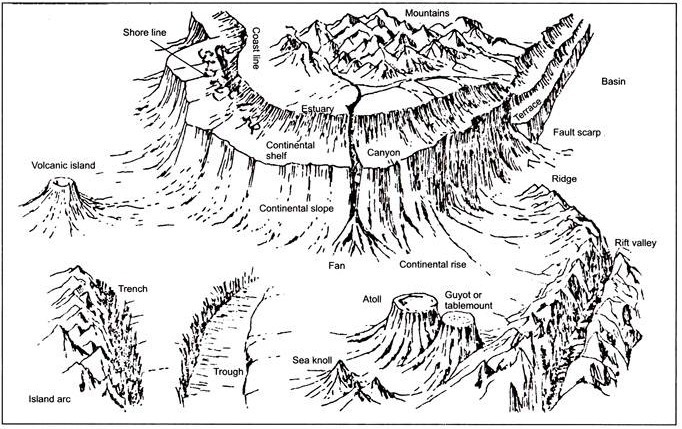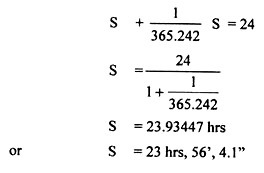ADVERTISEMENTS:
Any network may be represented as a matrix with rows as set of origins and the columns as the set of destinations. The number of rows and columns would correspond to the number of nodes in the network. By convention, the horizontal rows of a matrix are identified as a set of origin nodes and the vertical columns of the matrix are defined as a set of destination nodes. Each cell entry in the matrix may be used to record some information on the relationship between a pair of nodes.
Any node which is well connected to other nodes in a network is said to be accessible. Figure 4.8 shows five nodes linked together by a series of arcs and it can be seen at a glance that node A is the most accessible. But such assessment is not possible in more complex network involving larger number of nodes and alternative routes.
In such cases, accessibility can be found out by compiling a matrix commonly known as shortest path matrix as demonstrated in Figure 4.8. In this matrix, A count is made of the number of arcs separating the various nodes and inserting the appropriate number in appropriate box: for instance, the number of arcs separating A from B, C, D and E, respectively is 1, 1, 1 and 2 and E from A, B, C and D respectively 2, 3, 3 and 1. The totals of each row can be added up and the lowest total indicates the node, which is most accessible. In this case, ‘A’ is having a total of 5 (lowest) thus most accessible while ‘E’ is the least accessible with highest total of 9.
Topologically, accessibility can be measured in three ways:
(i) By shortest path matrix – the number of arcs used in the shortest path between all possible pairs (as shown in Figure 4.8)
(ii) By the associated number – the number of arcs needed to connect a node to the most distant node from it; and
(iii) By the Shimbel Index, derived from the shortest path matrix, which indicates the number of arcs needed to connect any node with all the other nodes in the network by the shortest path.
Figure 4.9 indicates the accessibility, as measured by associated number and Shimbel Index.
From the graph in Figure 4.9, a shortest path matrix has been prepared in the appropriate squares the number of arcs in taking the shortest path between all the paired nodes. The top row of figures in the matrix gives the number of arcs in the shortest paths from node A to all the other nodes; the second row from node B to all the others; and so on.
Since the associated number is the number of arcs needed to connect a node to the most distant node from it, the associated number is the highest number in each row, e.g., in row A, 4 and in row F, 3. Thus E, with an associated number 2, is the most accessible of all nodes. If we add up all the associated numbers and divide the total by the number of nodes, we get the mean associated number and a low mean figure (in this case 23/7 = 3.3).
While Shimbel Index can be derived from the shortest path matrix – the total of each row gives the Shimbel Index. In Figure 4.9, A and B are having Shimbel Index of 13, C and D 11, E-9, F-12 and G-17. Since E is having lowest value of all the rows, it is most accessible of all the nodes by the Shimbel Index.
ADVERTISEMENTS:
Nodal accessibility is often explained in terms of degree of a node. According to measures discussed above the accessibility is obtained directly from the connectivity matrix. A summation of the individual rows of the matrix produces a column, or vector, or values, in other words, the degree of a node. But the degree of a node has serious limitations as a measure of accessibility. For surface modes of transport, accessibility involves more than the direct connection between nodal pairs.
The indirect connections, i.e., a linkage between a pair of nodes which passes through one or more intermediate are also important, therefore, a suitable measure should take into consideration for both direct and indirect connections. It is possible to manipulate the connectivity matrix to derive two measures of accessibility – one related directly to structure and another related to topological distance by matrix multiplication. Matrix multiplication involves the element-by- element multiplication of the row in a matrix by the columns of another.
To derive a value for the cell of the first row and first column of the matrix, we multiply the first column times by the first row – that is, we multiply the first element in row 1 by the first element in column 1. Then, we multiply the second element in row 1 by the second element in column 1, and so on. Figure 4.10 shows the matrix multiplication in a two-linkage path.
The value can be recorded as:
What is Cij.Ckj? It is indirect connection, or path of two linkages from node i to node j. If we sum all the matrices recording indirect paths between the nodes, the result is a matrix specifying all direct and indirect connections between the nodes of the network, as depicted in Figure 4.11 in which the matrices as c, c2, c3 and c4 are summed to give a matrix T that enumerates the total of all direct and indirect connections of a sample network. In fact matrix T is a representation of the accessibility surface of the network. Using the row sums of the matrix T, we can rank nodes in terms of their relative position (accessibility) on the network. The higher the value of the row sum the greater the accessibility of the node.





